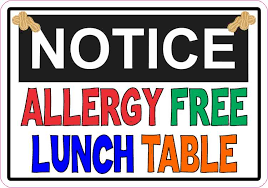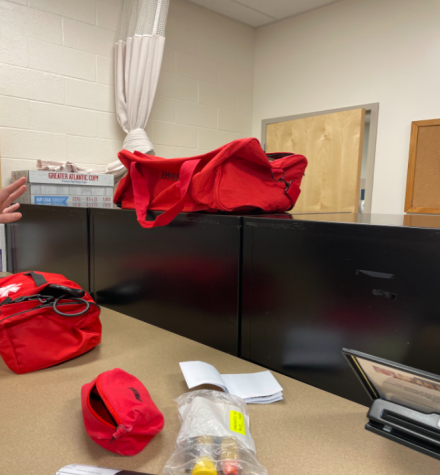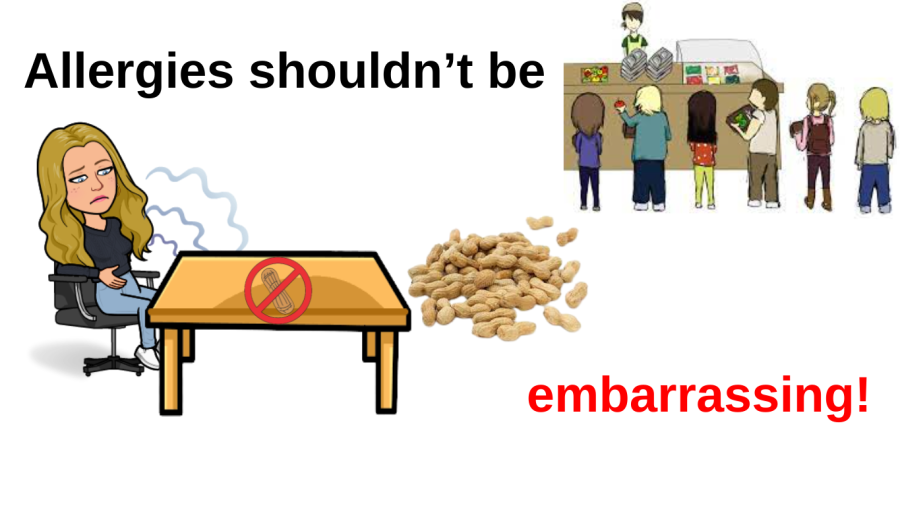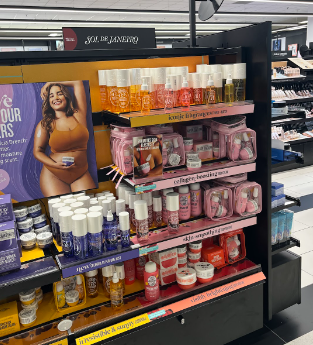The allergy table creates uncomfortable segregation
Many students are embarrassed of their allergies and the tables that accompany them. There should be no embarrassment when all you’re doing is keeping yourself safe.
April 29, 2022
Picture lunch detention, sitting at that one round table in the cafeteria where everyone can see that you were late to school for the third time and got in trouble. Embarrassing, but you have plenty of company. Strangers, but company.
Do you know what’s more embarrassing? Being the only one at the “Allergy table.” 
There are dedicated tables for students with allergies in most high school cafeterias, but rarely do those students go through the embarrassment of sitting there.
Allergies can be life threatening and we need to recognize the dangers. Ninety percent of food allergies are caused by simple foods that most eat and cook with every day. Cow’s milk, eggs, tree nuts, peanuts, shellfish, fish, soy, wheat, and gluten are all included.
“Most of my allergies are tree nuts, but I’ve had a bunch of environmental and animal ones,” said Class of 2022 member Madeline Hull.
Most young adults in high school are vigilant in what they are ingesting, but what happens if they think nothing of it and start having an allergic reaction? Allergies are not something to hide. When people hide them, it endangers that person and raises the risk of them getting hurt.
Allergies are a part of you – they are not something we choose – so there should never be any embarrassment over allergies – even if others try to make you feel that way.
— Moira DiGiacomantonio
“I would think it’s embarrassing to sit at an allergy table because I would feel excluded from everyone else,” said Leslie Zampier.
Nobody should be too embarrassed to take care of themselves; allergy tables can help students and their safety. Being singled out from all other students is definitely the biggest source of embarrassment for most students, but it doesn’t have to be this way. Allergy students can communicate with their friends that they regularly sit with and explain how they want to stay safe. They should always be prepared for an emergency, easy access to their EpiPens is a perfect way to be ready for anything.
In elementary school, no one was embarrassed to sit at the allergy free table. Why do high schoolers make it such a big deal?
“I used to sit at the allergy table but then I was like no, I don’t want to do that. I didn’t like how we were singled out at the allergy tables because of our allergies. It wasn’t our fault so it kind of felt like the school was trying to embarrass us in some way,” said Hull.
A few teachers go to the length of assuring and enforcing nut-free classrooms for the safety of their students.
“Encouraging a nut-free environment helps to eliminate any dangers for students with nut allergies, regardless of the severity of their allergy. By eliminating the dangers of a nut exposure, students with nut allergies are given the opportunity to focus on their education, and not a potentially life-threatening exposure to allergens.” said said Moira DiGiacomantonio, math teacher, through an email.
Every three minutes, a food allergy reaction sends someone to the emergency room.
Having nut-free environments eliminates a big source of student allergens. This can stop the constant worrying of allergenic students. Allergies in general are very overwhelming and a lot to deal with day by day; without the worry, students can focus more on their education.
“We follow school protocol and have a bag with all the medical supplies we would need if we were called to a scene. A student would only have to have one of the symptoms listed and we would give them an EpiPen, if they didn’t have one for themselves,” said LeAnn Windsor, school nurse.
FCPS School Health Services Anaphylaxis Protocol is provided to our school nurse. They are required to suspect Anaphylaxis if a student presents with or complains about any of the listed symptoms.
Mouth/throat symptoms:
Blue/grey lips; swelling of mouth/throat or tongue; tightness of throat; feeling like throat is closing; difficulty swallowing; hoarseness or change in quality of voice.
Lung symptoms:
Coughing; wheezing; shortness of breath; difficulty breathing; noisy breathing; “air hunger” or gasping for air.
Heart symptoms:
Dizzy/lightheaded; fainting; loss of consciousness or unresponsiveness. If able to obtain: weak or absent pulse; low blood pressure (may be accompanied by rapid pulse.)

Non-allergic students don’t notice how fast an allergic reaction can happen and the dangers it can cause.
“As soon as we administer the EpiPen, we have to call 911 and the parents. The parents have a choice whether or not they want to send their child to the hospital, but usually they do so for observation and if it flares back up,” said Windsor.
Some symptoms can cause people to go into shock, so allergic reaction emergency care is essential.
Everyone will react to their allergen differently and some food allergies won’t cause a reaction until later on or something else can induce it. A Special Education Assistant, Jennifer Ribecca, has a specific allergen like this. Food-dependent exercise-induced anaphylaxis (FDEIA) only affects 0.02 percent of the world population and Ribecca is within that small percentage.
FDEIA is a type of exercise-induced anaphylaxis (EIA) that occurs only when a individual ingests a food allergen(s) and proceeds to exercise within a certain window of time.
Not many doctors understood the symptoms Ribecca was going through and assumed she only had asthma. The asthma treatment never worked because it wasn’t what she needed. Eventually she found a doctor that knew was going on and provided her with what she needed.
“The first really bad reaction I had, I knew for sure something had to be wrong. I was about a mile into my run and my palms started to itch. I know better but as a runner we’re like it was just a flesh wound and I’ll be fine, just shake it off. By the time I got to the second mile, I felt like it was the filling of a vase. I could feel everything starting to close off, starting at my chest all the way up to my chin,” said Ribecca.
When Ribecca started to feel like this, she came across a shop on the street she was running on. If they wouldn’t of been open, she would of had a serious problem and might have not made it to today.
Ever since that day, she is constantly making sure that she does the things needed to not have another reaction. She carries a EpiPen with her but has never actually had to use it. Ribecca takes multiple precautions including not eating much and taking her medicine before she exercises.
“Nobody should be embarrassed by anything that goes on with them physically. We all have something that we have to watch and maintain. To me, allergies are no different then having to take medicine for migraine headaches, high blood pressure, epilepsy, or if you have diabetes,” said Ribecca.












